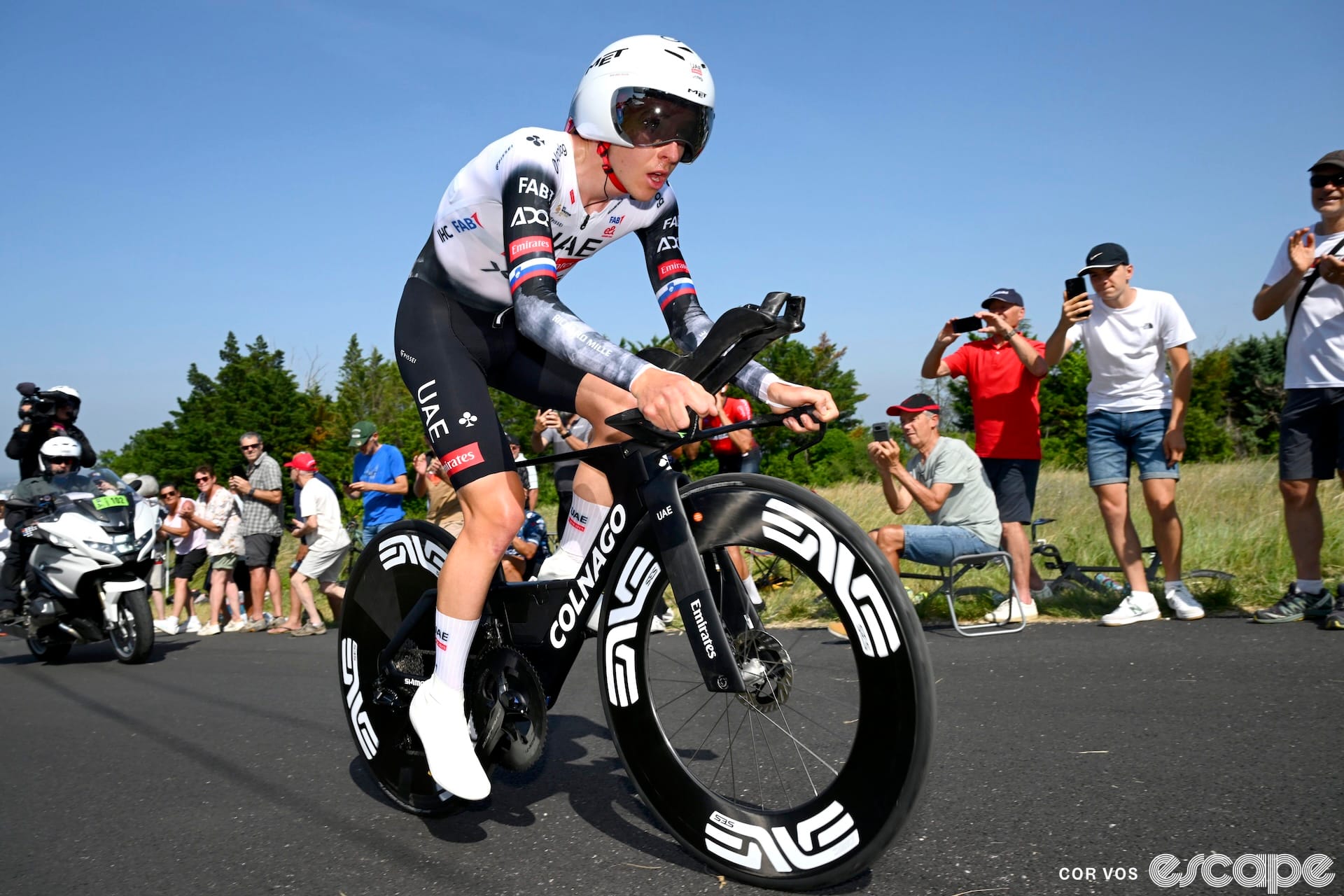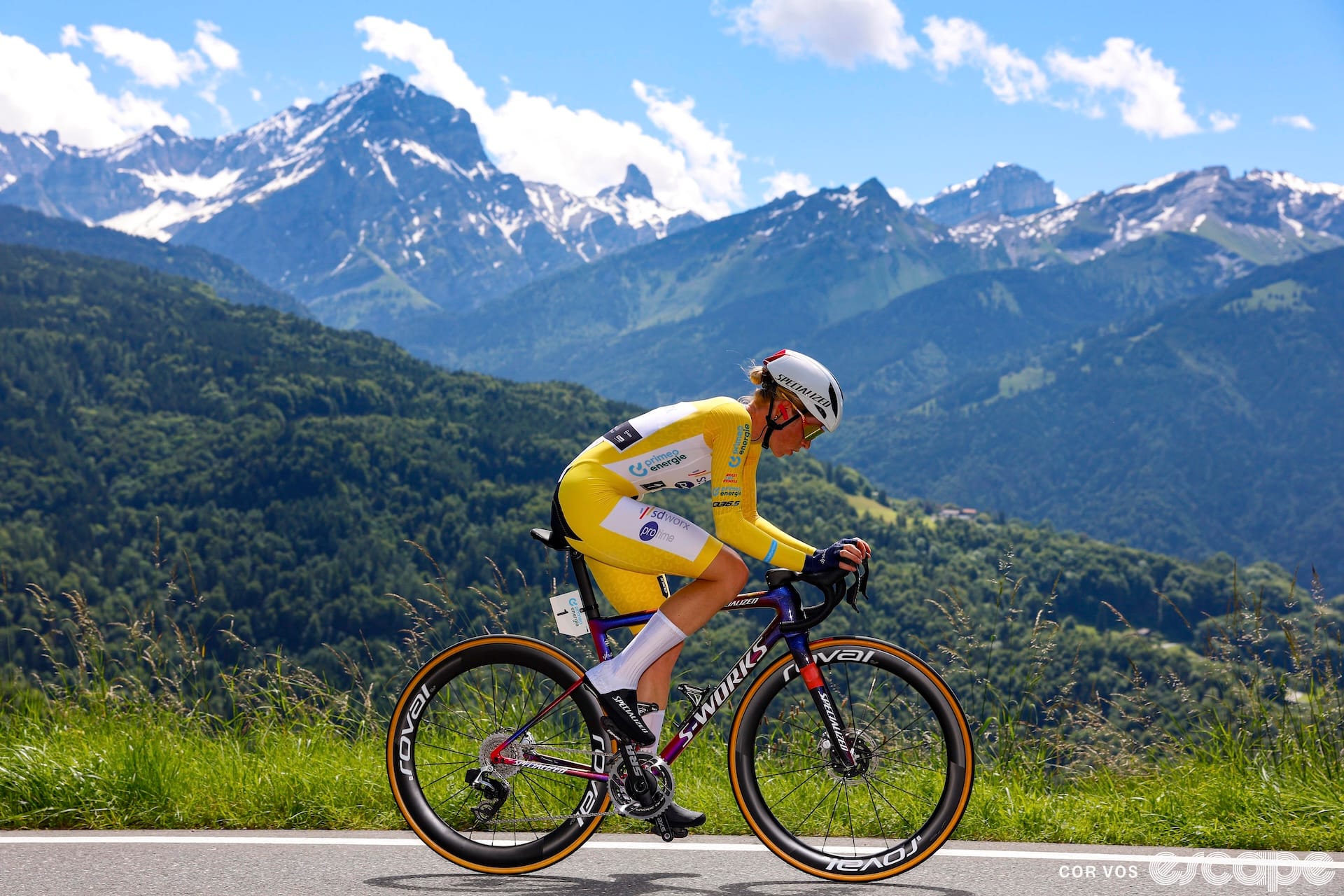From Mathieu van der Poel’s overshoes to Tadej Pogačar’s bike choice, we dive deep into the Spring Classics with the cycling world's favorite pseudonymous aero expert, CyclingSpy. Why are some teams going all-in on aero, while others seem to be holding back? What do helmet choices, skinsuit fabrics, and even trailer mounts on pro bikes tell us about modern race-day priorities?
We unpack the implications of CyclingSpy’s provocative observation that Philippe Gilbert’s win at the 2019 Paris-Roubaix would’ve missed the time cut this year and what that says about how fast racing has become. We also dig into whether bouncing over cobbles ruins your aero gains, and tackle listener questions on ankle aerodynamics, helmet vortices, and whether exposed brake hoses might be the next marginal gain hiding in plain sight.
Spring Classics and performance tech insights (00:00)
- Ronan Mc Laughlin introduces the podcast, focusing on performance processes and tech insights for cycling enthusiasts.
- The discussion includes trends, trade-offs, and observations in performance tech, such as team choices between aero and comfort control.
- Topics range from aerodynamic roles of vortices and helmet design to yarn flow visualisation and testing.
- Ronan mentions the podcast's updated version with an AI-generated voice to improve listener experience.
Spring Classics observations and team strategies (02:08)
- Ronan and the anonymous aero expert CyclingSpy discuss the 2025 Paris-Roubaix race, noting that Gilbert’s winning time in 2019 would be outside the time limit in the 2025 race.
- The conversation highlights the impact of wind direction and changes in racing strategies over the years.
- Ronan and the Spy delve into the differences in equipment, such as skinsuits, wider tyres, and advanced bikes, contributing to faster race times.
- The discussion touches on the importance of proper fueling and training, which allow riders to maintain high power output throughout the race.
Impact of cobbled sectors on aerodynamics (09:41)
- Ronan and the Spy explore the effect of cobbled sectors on aerodynamics, questioning whether the shaking cancels out or enhances aerodynamics.
- The CyclingSpy explains that the frequency of the up-and-down movement over cobbles is likely to have a minimal impact on the rider aerodynamics but potentially bigger impact on components.
- They discuss the use of sensors and testing methods by teams to measure various parameters during Roubaix recon days.
- The conversation includes a humorous anecdote about a bike trailer attachment on Tiesj Benoot's bike, which turned out to be a child's bike trailer.
Team strategies and equipment choices (16:52)
- Ronan and the CyclingSpy discuss the range of skinsuits used by different teams and the impact on performance.
- They highlight the importance of optimising equipment for specific roles within a team, such as team leaders versus support riders.
- The conversation touches on the use of aero overshoes and the significance of rider positioning during the race.
- The CyclingSpy notes that some teams, like Red Bull-Bora-Hansgrohe, have different options for skinsuit fabrics to suit various conditions and rider sizes.
Van der Poel's performance and equipment choices (20:20)
- Ronan and the CyclingSpy analyze Van der Poel's performance, noting his use of aero overshoes and a skinsuit, despite not using the latest aero equipment.
- They discuss the importance of rider positioning and the impact of different helmet designs on aerodynamics.
- The conversation includes speculation about the reasons behind Van der Poel's choice of equipment and his ability to maintain a low position during the race.
- The CyclingSpy mentions that Van der Poel's comfort with the older helmet design might be a factor in his choice.
Team equipment choices and aero optimisation (37:05)
- Ronan and the CyclingSpy discuss the choice of bikes by different teams, such as UAE Team Emirates' use of the V4Rs over the Y1Rs.
- The conversation includes a discussion about the new V5Rs and its design features, such as reduced frontal area.
- The CyclingSpy explains the rationale behind making bikes smaller to reduce drag, despite the practical constraints of stiffness and geometry.
Flow control and future aero designs (49:47)
- Ronan and the CyclingSpy discuss the potential for flow control technologies in future aero designs.
- They mention the success of the Vorteq bike in the Tokyo Olympics as an example of effective flow control.
- The CyclingSpy explains the challenges of predicting wind angles and the benefits of making bikes smaller to reduce drag.
- The conversation touches on the limitations of current understanding and the need for further research in flow control.
TT5 helmet aero and flow visualisation techniques and limitations (48:48)
- Ronan and the CyclingSpy answer a member's question on the Specialised TT5 helmet and whether the "head sock" might have been a red herring.
- The conversation turns to discuss the use of string tufts for flow visualisation during testing.
- The CyclingSpy explains the limitations of string tufts, such as their interaction with the flow and the difficulty in measuring accurate separation points.
- They mention other flow visualisation techniques, such as PIV (Particle Image Velocimetry), which offer more accurate results.
- The conversation highlights the challenges of using string tufts in cycling and the preference for more reliable methods.
Brake hose design and aero optimisation (01:01:30)
- Listener Thomas Bank asks about the potential benefits of routing brake hoses through the caliper to shield them from the wind.
- The CyclingSpy explains the current design priorities, such as cooling the brake fluid and shielding the caliper.
- They discuss the potential for improving brake hose design to reduce drag, including the challenges of maintaining brake feel and serviceability.
- The conversation touches on the broader implications of brake hose design on the overall aerodynamics of the bike.
Final thoughts (01:06:00)
- Ronan and the CyclingSpy wrap up the discussion, reflecting on the progress made in aerodynamics and the challenges ahead.
- They mention the importance of continuous research and development in performance tech.
- The CyclingSpy highlights the need for better understanding of flow control and the potential for future innovations.
- Ronan thanks the CyclingSpy for his insights and concludes the podcast, encouraging listeners to stay tuned for future episodes.
Did we do a good job with this story?

